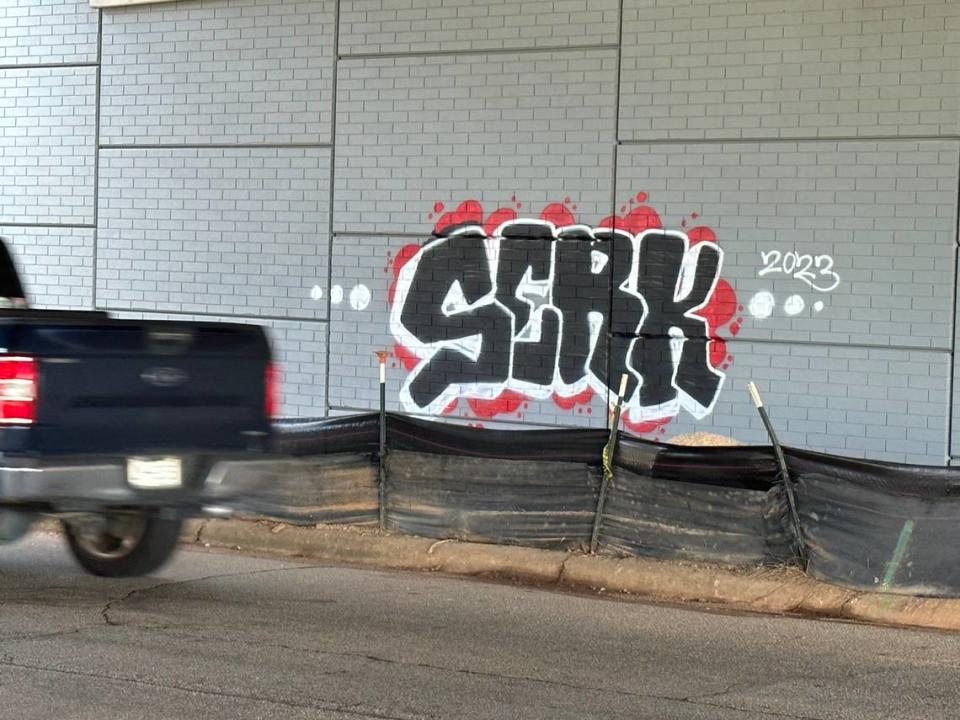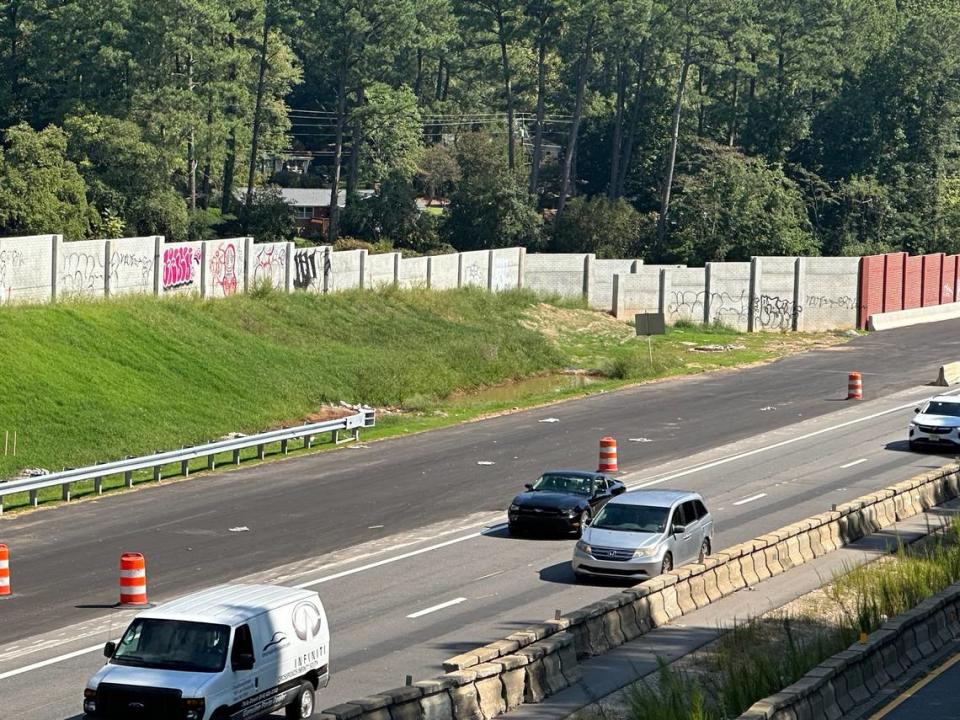Roadside graffiti is on the rise. On Raleigh’s Beltline, it poses a special challenge.
The squiggly lines and plump, rounded letters that showed up on the new sound walls along the Beltline in West Raleigh recently are part of an uptick in graffiti on N.C. Department of Transportation structures in the past year or so.
After a lull during the COVID-19 pandemic, the amount of graffiti on NCDOT walls and signs has rebounded in the Triangle, according to Brandon Jones, the top engineer in the division that includes Wake and Durham counties. In the fiscal year that ended June 30, the division paid contractors about $225,000 to remove graffiti, three times what it spent a year earlier, Jones said.
Normally, NCDOT’s contractor is quick to attack new graffiti, but the paint on the Beltline is taking longer to clean up, Jones said.
That’s because some of it is on a new type of sound wall that’s made of concrete but formed and painted to look like brick. NCDOT and the construction company that built the walls are trying to figure out how to take the graffiti off without marring the special brick paint.
Kevin Smith, an NCDOT graffiti-removal contractor, says that on bare concrete he begins by permeating the scrawls and images with solvent for about 15 minutes, then hits them with high-pressure steam. A couple rounds of that usually does the trick, Smith said.
“Unless it’s some really expensive paint that they’re using, it’ll come off with that two-step process,” he said. “But if there is some shadowing, we’ll have to go over it a third time.”
Smith has been in the pressure-washing business for more than 25 years and branched into graffiti removal 5 years ago. He said you’ll find graffiti everywhere in the Triangle, but that the nature and quality of it varies.
Out along Interstate 540 and U.S. 401 in North Raleigh, he said, the scribbling tends to be cruder and more vulgar, likely the work of kids. In addition, someone uses sound wall messages in that area to express their disdain for homebuilders and developers.

But the busiest place for highway graffiti is in West Raleigh, Smith said, perhaps because of its proximity to the students at N.C. State University. Some of it is the elaborate, colorful words and images you associate with graffiti in places like New York, and Smith feels a little bad taking it off.
“Some of it is just really artistic. It doesn’t address any particular political agenda or any stereotype, but it’s just nice artistic expression. Very well done,” he said. “But they pay me to take ‘em down, so that’s what I do.”
‘Graffiti vandalism’ is a crime in North Carolina
Smith agrees there’s been a significant increase in graffiti since the pandemic. Perhaps things got quieter when classes went virtual and there were fewer NCSU students in town, he said.
Jones has spent about 28 years with NCDOT and says graffiti has always waxed and waned. He doesn’t know why.
“Sometimes there’s not a lot of activity, and other times you can’t keep up with it,” he said. “I don’t know what would create cycles of graffiti activity.”
The City of Raleigh has two crews dedicated to removing graffiti. They haven’t seen an increase in recent years, said spokesman Rob Murray. Raleigh maintains a website and special email address, graffiti@Raleighnc.gov, where people can report graffiti, which the city tries to get to ASAP, Murray said.
“Removing graffiti quickly acts as a deterrent to continued tagging,” he wrote in an email.
Under state law, “graffiti vandalism” is a Class 1 misdemeanor, punishable by a $500 fine and possibly 24 hours of community service.
But despite how common it is, graffiti seldom becomes a police matter. Since the beginning of 2021, the Raleigh Police Department has received only 5 reports of graffiti in the city, said spokesman Jason Borneo.
“More often than not, they are quickly cleaned up by crews or go unreported,” Borneo wrote in an email.
It’s not uncommon for police to notify NCDOT when officers see graffiti on walls or signs that’s either offensive or tied to gangs, Jones said. But the department doesn’t typically report graffiti because it seems too late, he said.
“After-the-fact, there’s probably not a whole lot they can do besides just make a record of it,” he said.
Jones said the graffiti along the Beltline took place in a construction zone where whoever painted the sound walls had some space to access them. By the end of the year, traffic will shift onto new lanes closer to the walls, which might discourage future tagging, he said.
Jones said there are anti-graffiti coatings for sound walls, but they’re expensive and don’t actually prevent graffiti. They just make it easier to clean the paint off.
Jones said he expects the graffiti along the Beltline will be cleaned up sometime in the next few weeks, once NCDOT, the construction company and the contractor have agreed on a strategy for the faux-brick walls.


